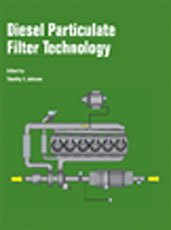Journal Article
Vehicular Emissions in Review
2012-04-16
2012-01-0368
This review paper summarizes major developments in vehicular emissions regulations and technologies (light-duty, heavy-duty, gasoline, diesel) in 2011. First, the paper covers the key regulatory developments in the field, including proposed criteria pollutant tightening in California; and in Europe, the newly proposed PN (particle number) regulation for direct injection gasoline engines, test cycle development, and in-use testing discussions. The proposed US LD (light-duty) greenhouse gas (GHG) regulation for 2017-25 is reviewed, as well as the finalized, first-ever, US HD (heavy-duty) GHG rule for 2014-17. The paper then gives a brief, high-level overview of key emissions developments in LD and HD engine technology, covering both gasoline and diesel. Emissions challenges include lean NOx remediation for diesel and lean-burn gasoline to meet both the emerging NOx and GHG regulations.

